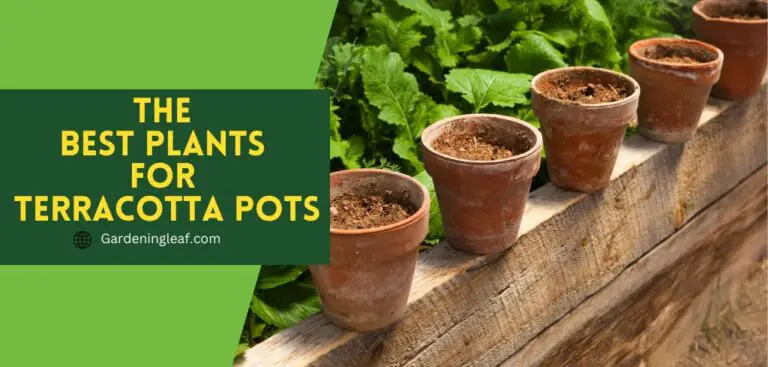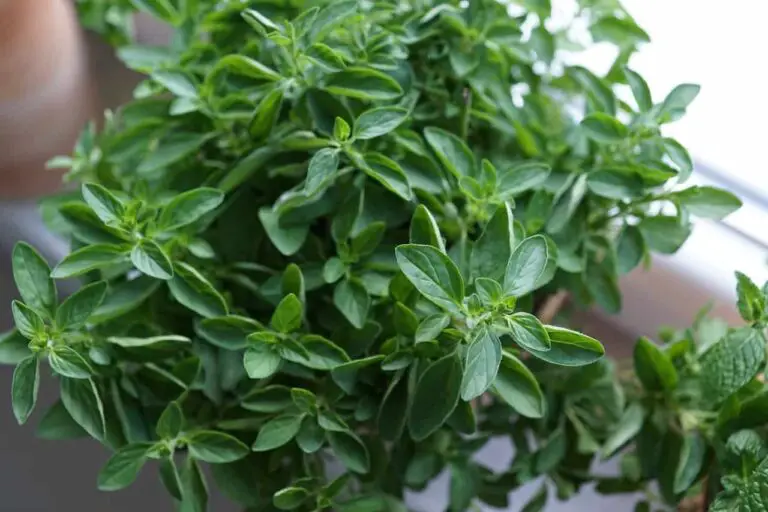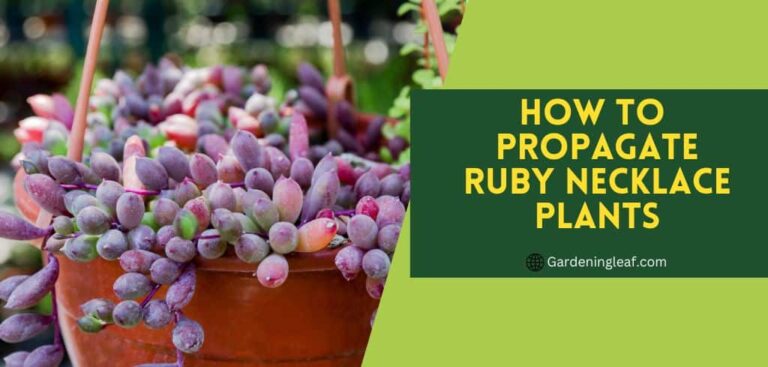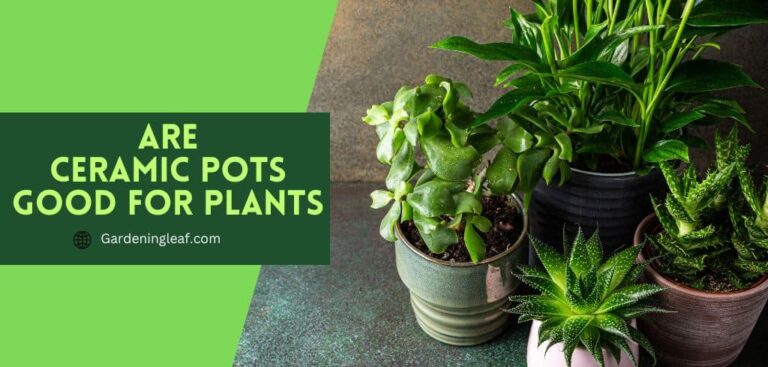How Often Should You Water A Bonsai Tree? Find Out Now!
Adding bonsai trees to your home can enhance its beauty and uniqueness. Bonsai, or small trees, grow with specialized treatment and attention. The most crucial part is its watering. People confused about how often should you water a bonsai tree?
The answer depends on the specific bonsai tree and its surrounding conditions. Bonsai trees differ from typical houseplants. They are grown in small containers and have specific soil and watering needs.
The watering needs of your bonsai tree depend on several factors. Such as the species, pot size, soil mixture and fertilizer, and climate. So develop a watering schedule that suits your bonsai’s needs.
Generally, they require water every 2 to 3 days. Watering frequency may also change with seasonal variations, so keep an eye on your tree’s growth and adjust accordingly. Remember that proper watering is crucial for the health and growth of your bonsai.
Read More :- How Often to Water Geraniums in Pots? An Effective Guide
Best Way to Know How Often Should You Water A Bonsai Tree
To know How Often Should You Water a Bonsai Tree, you need to look at it, touch it, and know what it needs.
Observing the Soil Moisture
Regularly checking the soil moisture lets you decide when to water your tree. Stick your finger into the soil about an inch deep, and it feels dry. It is the time to water your plant .
Also, To understand proper soil moisture level, use a moisture meter.
Develop a watering schedule based on your tree’s needs and surrounding conditions. Monitor your tree’s growth patterns and regularly check the soil moisture to adjust the watering frequency accordingly.
Evaluating the Weight of the Pot
Another way to decide is to check the weight of the pot. Try lifting the pot to get a sense of how heavy it is. If It feels heavy, the soil is wet; if it feels lighter, the soil is dry, and the tree requires water. The soil is still moist if the pot feels heavy, and the tree doesn’t need water.
Checking the Color of the Leaves
If you carefully Observe the leaf’s color on your bonsai tree. You can understand when it requires watering . when the leaves are lively and bright green. It usually indicates that the tree is sufficiently hydrated. Conversely, if the leaves appear dull or have begun to yellow. It may indicate that your bonsai necessitates watering.
Consider the environment
The location of your bonsai tree can affect the frequency with which you water it. For instance, a warm and dry room might require more frequent watering than a cooler and humid environment. Pay attention to the conditions in which your bonsai tree thrives to ensure it receives the appropriate amount of water.
Stick to a watering schedule.
Creating a proper watering schedule is important for maintaining the health of your bonsai tree. Identifying the ideal frequency for watering and adhering to a consistent routine guarantees that your tree receives the right amount of hydration and remains healthy.
Understand the tree species:
Different tree species have different water requirements. Make some research and familiarize yourself with the specific needs of the bonsai tree species you have. as some may prefer slightly drier conditions, while others may need more moisture. Like jade, bonsai need to water once or two times in every week .
How do you properly water a bonsai tree?
Properly watering your bonsai tree requires specific techniques that can significantly impact its growth and health.
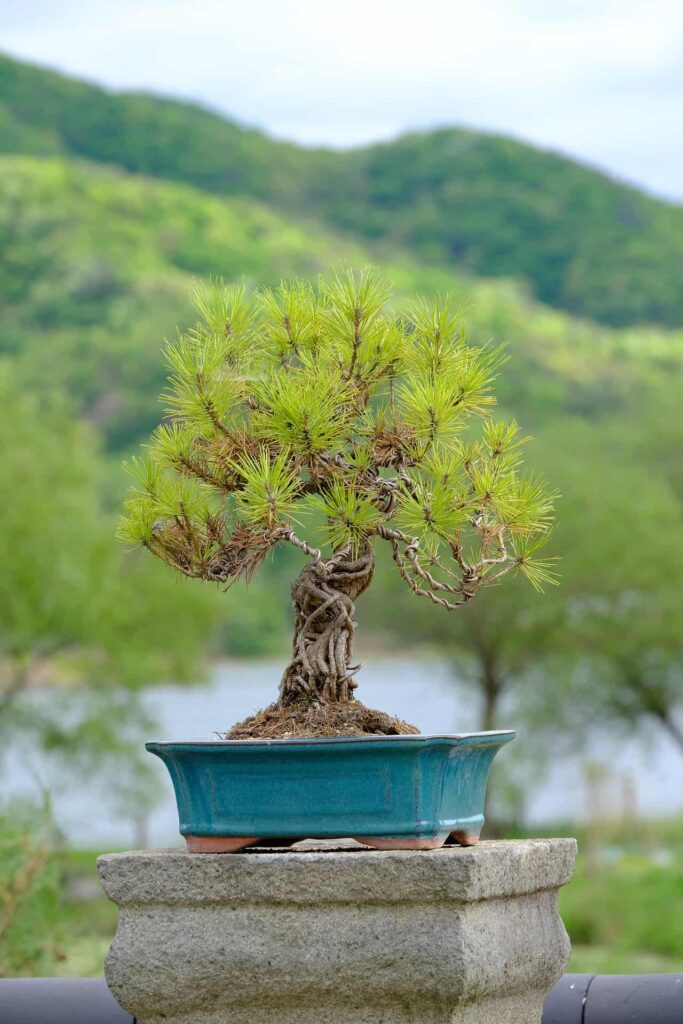
- Thorough watering: When you water your bonsai, thoroughly wet the root ball and ensure all parts of the soil receive water.
- Watering from above To ensure even water distribution throughout your bonsai tree’s soil, pour water slowly from the top until it drains out of the bottom of the pot. To properly water your bonsai tree, aim the water towards the soil surface and the base of the tree. Using a watering can or a hose with a gentle spray nozzle that produces a fine mist or soft water flow is best. While watering, water pressure and angle are important. Direct the water towards the soil and keep the flow close to the surface to avoid splashing onto the leaves.
- Slow and even watering: To effectively water your plants, it’s important to avoid rushing the process. Instead, apply water evenly and slowly to prevent runoff and soil erosion. This lets water reach your plants’ roots.
- Drainage tray usage: Placing your bonsai tree on a drainage tray or saucer is a good idea to avoid water spilling out of the pot drainage holes and making a mess. Clear the tray right after watering to avoid submerging the tree in standing water.
- Adjust watering frequency: water when soil seems slightly dry (but not completely dry). Tree species, container size, soil composition, and habitat determine watering frequency. To ensure the tree gets enough water, check the bonsai soil periodically. A bonsai moisture meter or your finger can measure soil moisture.
- Consider environmental factors: It’s important to consider the weather, humidity, and airflow around your bonsai tree when determining how often to water it. You may need to water it more frequently when it’s hot and dry, but when it’s cooler and more humid, you can water it less often.
- Avoid watering the leaves: Watering the leaves of your bonsai tree can cause them to become moldy or diseased. Watering the soil directly rather than the leaves is preferable, and you should try to keep water from getting on the plant’s foliage.
List of bonsai tree and their general watering needs:
| Bonsai Tree Species | Watering Schedule (Days) |
|---|---|
| Ficus | Every 3-4 days |
| Juniper bonsai | Every 5-7 days |
| Pine | Every 7-10 days |
| Chinese Elm | Every 2-3 days |
| Japanese Maple | Every 4-6 days |
| Serissa | Every 2-3 days |
| Jade | Every 7-10 days |
| Azalea | Every 2-3 days |
| Bougainvillea | Every 4-6 days |
| Maple (other species) | Every 4-6 days |
| Spruce | Every 5-7 days |
| Ginkgo | Every 7-10 days |
| Cypress | Every 4-6 days |
| Boxwood | Every 3-5 days |
| Olive | Every 5-7 days |
| Scots Pine | Every 7-10 days |
| Oak | Every 4-6 days |
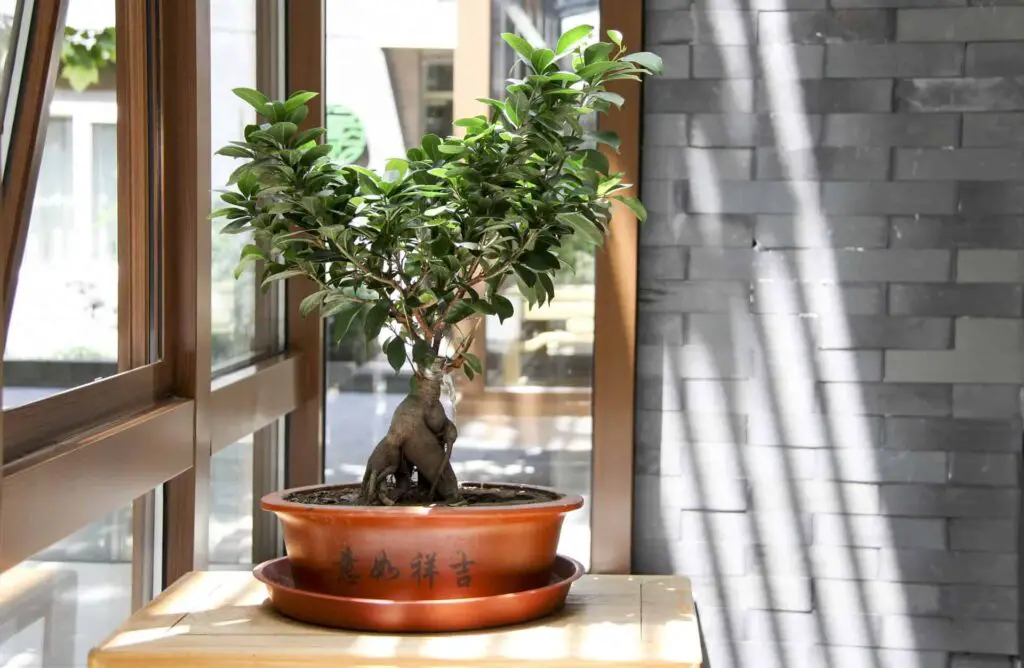
Top Bonsai Watering Tools You Need
It would help to have some of the top bonsai watering tools to maintain a healthy and beautiful bonsai tree.
1. Watering Can:-
- WHAT A BEAUTIFUL GARDEN YOU HAVE: Watering can features an extra-long spout...
- UPGRADED SHOWER HEADS NO LEAKAGE: Watering pitcher for outdoor plants spout...
- STURDY WELL DESIGNED WATERING CAN: If you're looking for a sturdy, well...
A watering can is a must-have tool for watering your bonsai tree. It allows for precise control of water flow and helps prevent overwatering. Choose a watering can with a long spout that can reach the roots of your bonsai tree and a narrow nozzle that will allow you to manage the amount of water poured in.
2. Spray Bottle:
- 【 Vibrant Multicolor Bottle Spray 】 This 3-pack of stylish 12 oz...
- 【 Built to Last 】Our BPA-free PET plastic spray bottle are your...
- 【 Versatile Empty Spray Bottle 】The perfect companion for every task!...
A spray bottle helps water your bonsai tree’s foliage. It helps keep the leaves hydrated and clean, essential for their health and appearance. Look for a spray bottle with a fine mist setting to avoid damaging the foliage.
3. Watering Wand:
- 9 SPRAY PATTERNS: center, cone, fan, shower, angle, flat, flood, mist and...
- 36-IN. LENGTH: The extended reach is excellent for reaching hanging...
- RATCHETING HEAD: Angle the watering head up or down to achieve the perfect...
A watering wand is a great tool for watering your bonsai tree’s soil without disturbing its roots. It makes it possible to water precisely and helps keep the leaves from becoming wet. Look for a watering wand with an adjustable flow rate to control the amount of water your bonsai tree receives.
4. Moisture Meter: –
No products found.
A soil moisture meter is essential for monitoring the moisture level of your bonsai tree’s soil. It prevents root rot and other issues from overwatering. A moisture meter with a probe can accurately measure soil moisture.
5. Watering Tray:
- Economical and Reusable - Drainage mesh built into pot + small holes...
- Bonsai Plastic Pots - Used for Bonzai trees either indoors or outdoors that...
- Heavy Duty Bonsai Pots: Includes trays made from poly-resin plastic. These...
A watering tray helps water your bonsai tree from the bottom up. It allows the root system to soak up water as needed, which helps prevent overwatering and ensures your bonsai tree receives the right amount of water. Look for a humidity tray that fits your bonsai pot and has a depth of at least 2 inches.
6. Drip Tray:-
- 10 Plant Trays: The package includes 10pcs 6-inch plastic plant trays, Its...
- Good Material: The plant pot saucers is made of high-grade plastic...
- Deepen The Design: The 0.8-inch high plant saucer can store more water and...
A drip tray is essential for catching excess water that drains from your bonsai pot. It helps prevent water damage to your furniture or flooring and keeps your bonsai tree’s roots from sitting in standing water. Look for a drip tray that fits your bonsai pot and has a depth of at least 1 inch.
7. Watering Spikes:–
- [STURDINESS] Improved new material different from normal terracotta, strong...
- [EASY TO USE] Just recycle any long neck bottles, such as wine bottle,...
- [HEALTHY ROOTS] With these watering spikes, water slowly sipped to make...
Watering spikes are an excellent tool for ensuring your bonsai tree receives water even when you’re not around. They slowly release water into the soil, which helps prevent overwatering and provides your bonsai tree receives water as needed. Look for watering spikes that fit your bonsai pot and are easy to refill.
FAQs
Can you overwater a bonsai tree?
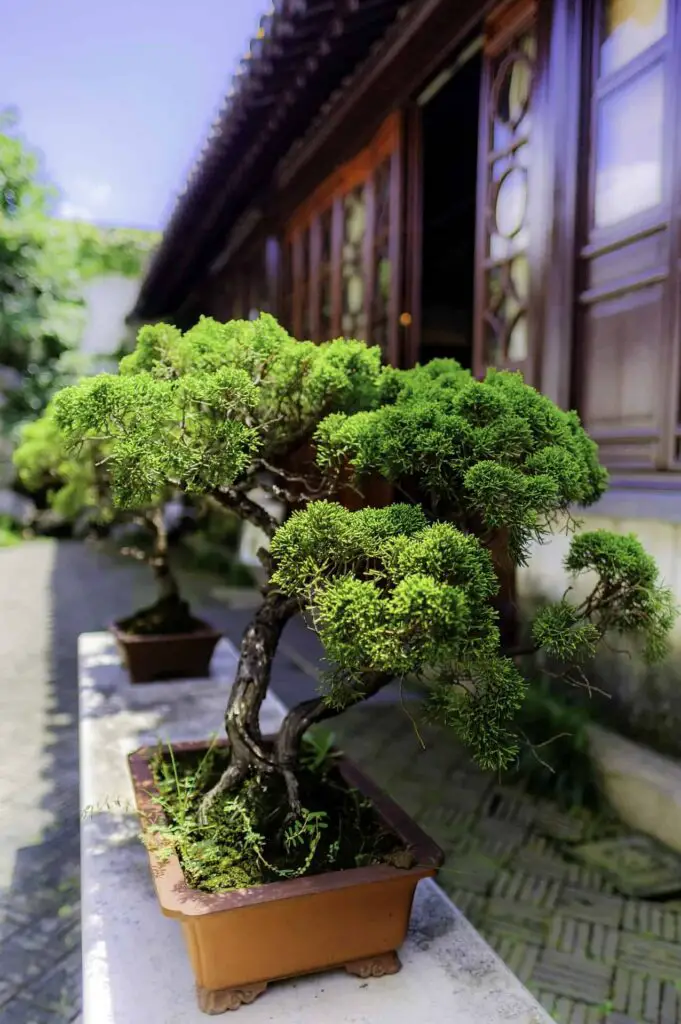
It is possible to overwater a bonsai tree, But it can cause the roots to be deprived of oxygen. if the soil remains excessively wet for a prolonged period. The sight of yellowing leaves, wilting, mushy or charred roots, and a putrid stench coming from the soil all indicate that the plant is receiving excessive water. These symptoms can lead to root rot, fungal infections, and a general deterioration in the tree’s health.
How often should you water an indoor bonsai tree?
Indoor watering varies on pot size, soil type, humidity, and temperature. Water indoor bonsai trees every 2-3 days when the soil gets dry. However, monitoring your bonsai tree’s moisture level using a moisture meter or observing the foliage for signs of dehydration or overwatering is best. Remember, it’s better to go underwater than overwater your bonsai tree as
Do bonsai like rainwater?
Bonsai trees generally like rainwater because it is free of chemicals and minerals present in tap water. Rainwater helps maintain the soil’s pH levels and provides essential nutrients to the tree. However, it is important to note that excessive rainfall or standing water can harm the bonsai, so it is important to ensure proper drainage and not over-water the tree.
Do bonsai trees need to be watered every day?
Watering bonsai trees daily is unnecessary. Too much water can cause root rot and other tree health concerns. Watering frequency varies on soil type, humidity, temperature, and pot size. Water indoor bonsai trees every 2-3 days when the soil dries. It’s best to monitor your bonsai tree’s moisture level using a moisture meter or by observing the foliage for signs of dehydration or overwatering.
Read More :- How often do you water marigolds
Conclusion
if you follow above mention tips, you can easily understand How Often Should You Water A Bonsai Tree. By monitoring your bonsai tree’s moisture levels and watering it appropriately, you can ensure it remains healthy and beautiful for years.








